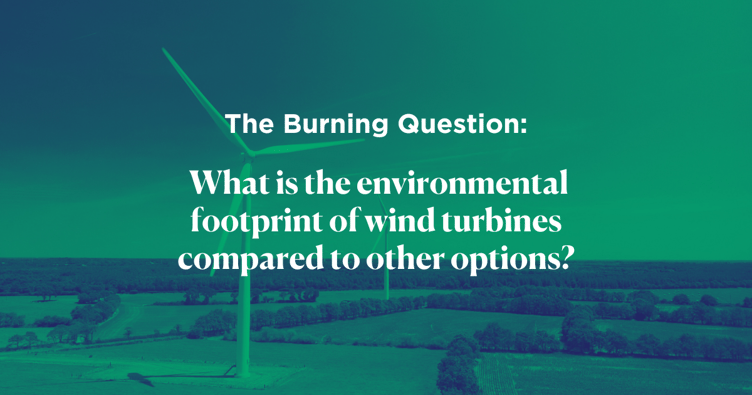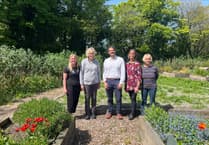A good way to tackle this question is to think of a real-world comparison between wind energy and oil. Considering one 10 Megawatt (MW) wind turbine, the amount of energy it would generate over 25 years is the same as would come from burning 1.3 million barrels of oil in a power station.
1.3 million barrels of oil is the size of a small field, one that might be found at a depth of two to three miles below the surface. It is difficult to find the oil in the first place but to extract it is even more difficult, requiring boreholes, steel pipes and cement to connect the field to the surface. At surface, there are large facilities including pumps, water extraction and cleansing units, storage tanks and safety equipment. The amount of material involved is much greater than a wind turbine.
Thereafter, the oil has to be transported to a refinery, processed into a useable fuel and then, in this example, has to be transported again to a power station, where it is used to generate electricity. The whole process is complex, expensive, environmentally harmful and potentially dangerous. Moreover, at the end of life of an oil field, most of the materials cannot be recycled, as they are polluted, whilst the boreholes have to be filled with cement to make them safe. In other words, many times more emissions are produced than building a wind turbine, even before the oil is used!
To generate electricity, burning 1.3 million barrels of oil will produce around 550,000 tonnes of carbon dioxide (CO2) whereas a wind turbine produces none.
Finally, there’s the cost of purchasing the oil – around £80 million pounds at today’s prices, whereas we do not have to buy wind – a free and abundant resource on the Isle of Man. Fuel prices are likely to increase in the future but they are also notoriously unpredictable, particularly when tensions rise in the Middle East.
The oil industry is a part of everyday life, having evolved over 120 years. But it’s interesting to think how we would react if oil was first discovered today. Imagine trying to sell the idea of searching for, extracting and processing a highly flammable and explosive liquid to generate power. Or how you would convince Dragon’s Den that it was worth investing in a business with a one in six chance of commercial success – the typical odds of finding a commercial oil field?
It’s true that using natural gas (methane) for power is often regarded as better than using oil. For example, burning gas produces slightly less CO2 emissions and gas is generally cheaper. However, natural gas has potentially a worse effect on the climate than oil because, when methane leaks, it has a much greater greenhouse warming effect than CO2. Furthermore, nowadays we all realise that gas supplies can be threatened by world events, making the Island vulnerable to supply issues, something we do not need to worry about with wind!
Despite the clear advantages of wind power, one argument is often brought up against it – the risk of bird deaths. The issue is collisions with rotating turbine blades. This is of course a legitimate issue to raise and, although rare, it’s true that collisions do happen. However, it’s important to note that all the relevant research shows that bird deaths associated with wind turbines are surprisingly low, particularly when compared to other activities. To date, the main cause of bird deaths, in order of importance, are cats, collisions with building windows, collisions with cars, pesticides and collisions with electrical equipment. But now the biggest threat to birds is climate change, with the predicted extinction of many species, including on the Isle of Man. This is another reason we have to stop using fossil fuels – the main cause of climate change.
In short, wind energy wins in terms of the environmental impact, costs and benefits to the Isle of Man. The remaining hurdle is the visual aspect of wind farms. In this regard, there are many aspects of modern life that we have got used to such as roads, housing estates and civil projects. Experience in other countries shows that it doesn’t take long to get used to the sight of wind turbines and, once people realise how much value they create, a sense of community pride develops.
To find out more about ESC go to www.energysustainabilitycentre.im or follow the charity on Facebook, LinkedIn and Twitter.





Comments
This article has no comments yet. Be the first to leave a comment.